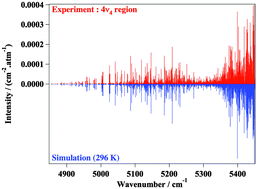High resolution spectroscopy and the first global analysis of the Tetradecad region of methane 12CH4†
Abstract
We present the first detailed analysis of the infrared spectrum of methane 12CH4 in the so-called Tetradecad region from 2.1 to 1.6 μm (4760–6250 cm−1). New experimental high resolution

- This article is part of the themed collection: Spectroscopy and dynamics of medium-sized molecules and clusters

 Please wait while we load your content...
Please wait while we load your content...